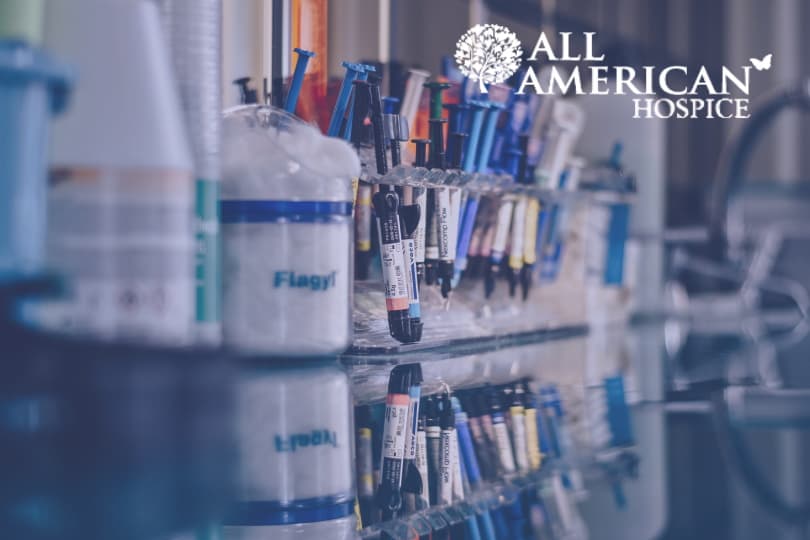Table of Contents

Whether it is AIDS symptoms or symptoms of HIV, you cannot be certain of your diagnosis unless you see a doctor. However, it is important to spot HIV symptoms early. HIV infection symptoms may seem like the flu, so it is important to monitor your health to nip signs of AIDS in the bud.
AIDS and HIV
The virus that causes AIDS is known as HIV. Your immune system (the body’s protection against sickness) gets damaged by the virus that attacks and destroys certain cells. It’s far more difficult to fight off illnesses that your body would typically be able to fight off when you’re infected with HIV.
The vast majority of individuals infected with HIV don’t show any symptoms for years and may not even realize they have it. Once infected with HIV, a person will carry the virus for the rest of their natural lifespan. Medicines can help them stay healthy if they have HIV, but there is no cure. It is possible to inhibit the transmission of HIV with the use of HIV treatment. It has also been noticed that if you take your HIV medication exactly as prescribed, your blood level of HIV may drop so low that it won’t show up on a test.
AIDS can develop if the first symptoms of HIV are not treated. Individuals living with HIV/AIDS may now lead normal, healthy lives and prevent the spread of the virus to others with the use of effective medication.
How do you get HIV?
Breast milk and semen are all potential carriers of HIV. Infection occurs when the virus enters the body through wounds or sores on the skin or mucous membranes (like the inside of the vagina, rectum, or opening of the penis). HIV can be transmitted by contact with a person who has the virus:
- If you’re having penetrative intercourse
- Using needles that were used by HIV-infected people
- Blood, semen, or vaginal secretions that are HIV-infected might enter open wounds or sores.
Pregnancy, delivery, and nursing can all transmit HIV. Pregnant women with HIV can take medication to dramatically lower the risk of their baby developing the illness.
It is impossible to get HIV via kissing, sharing food or drink, or using a fork or spoon that has been used by someone infected with HIV. Hugging, hand holding, coughing, or sneezing do not transfer HIV. Likewise, there is no way to get HIV by sitting on a toilet seat.
Infected blood transfusions were a source of HIV infection for certain persons in the past. But now, blood donations and blood transfusions at medical facilities are completely risk-free. Donated blood is tested for HIV and other diseases by medical professionals, including doctors, hospitals, and blood donation facilities.
Early signs of HIV
How do you know if you have HIV? After becoming infected, most people continue to seem and act normal for some time. People who have HIV may not exhibit any symptoms for a decade or more if they are taking HIV drugs. For anyone who has had unprotected sex or shared needles, it’s critical to be tested for HIV on a regular basis. In the long run, HIV therapy can keep you healthy. As a result of treatment, you may be less likely to transmit HIV to other individuals during intercourse.
What is usually the first sign of HIV? During the first two to four weeks after contracting HIV, you may have fever, aches, and exhaustion. Your body’s initial response to an HIV infection manifests itself as flu-like symptoms. Your viral load is very high at this point, making it easy to infect others. After a few weeks, the HIV symptoms normally go away, and you don’t experience them again for years. In spite of this, HIV can be transmitted to others even if you are not showing any symptoms or showing signs of illness.
Later signs of HIV/AIDS
CD4 cells (also known as T cells) in your immune system are decimated by HIV. Your immune system will be significantly weakened if it lacks CD4 cells. This increases your risk of becoming seriously ill from infections that would normally have no effect on you. Symptoms of AIDS develop as a result of the immune system-damaging effects of HIV over time.
An opportunistic infection, malignancy, or the loss of CD4 cells are all indicators that you may have HIV/AIDS. If you don’t get therapy for HIV, this generally occurs 10 years after infection. AIDS can be delayed or even prevented with treatment.
Where do hospices come in?
When the time is appropriate, the patient’s doctor may suggest HIV/AIDS palliative care or a hospice.
- Comfort. Hospices assist patients and their families through this difficult time.
- Individual-focused. Hospice staff become part of the patient’s or family’s end-of-life experience. Individualized care is the hospice’s mission. Patients’ and families’ voices are heard. The caretakers will do everything to ensure they value the patient’s well-being.
- Fewer hospital readmissions. Some terminally sick patients visit the ER regularly for acute HIV symptoms, while others are hospitalized frequently. Receiving hospice care means that patients are less likely to be hospitalized in their final stages. In the end-of-life period, hospice team members become involved. Individualized care is the hospice’s mission.
- Security. Hospice patients know they can always get medical treatment. MyAllAmericanHospice Telecare provides 24-7 care. MyAllAmericanHospice also helps families offer their ailing loved ones exceptional care.

 215-322-5256
215-322-5256
Comments are closed.